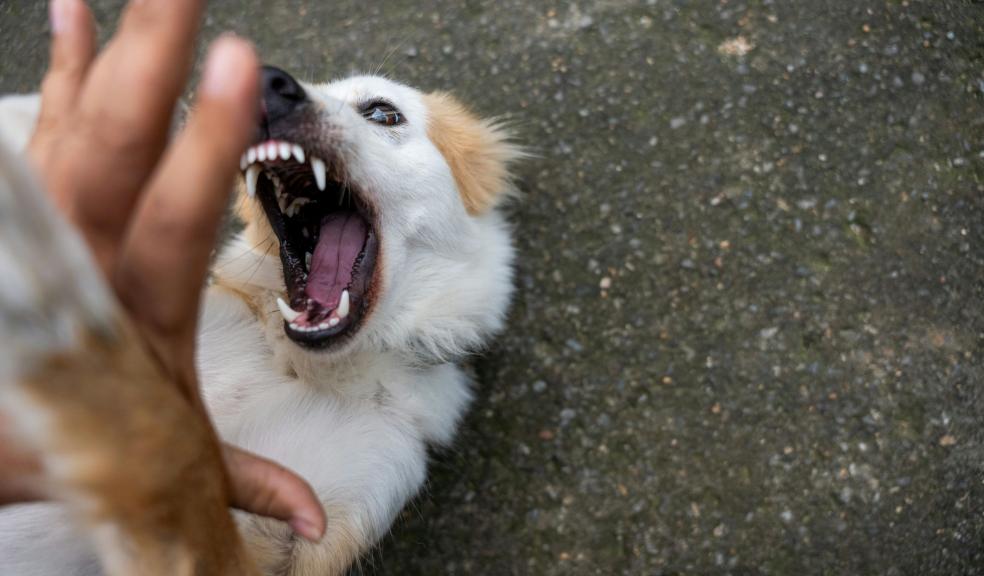
1 in 5 videos show pets in distress on TikTok: follow these expert tips to avoid distressing yours this National Dog Day
How might you be making your dog distressed when filming content for social media, and how to tackle it?
Q&A with Admiral Pet's in-house veterinary nurse, Nicki Fox
1. 51% of distressed pet videos show them being scared or startled. What is the potential psychological impact?
According to our research, 51% of the distressed pet videos show them being scared or startled. From our sample, this content was seen over 1.4 billion times and liked more than 104 million times.
Elsewhere, we found that 2 in 5 videos of distressed pets show them in dangerous situations, such as leaving them near open windows, unpredictable new environments, or even exposing them to loud music and sudden sounds.
Scaring or startling your pet can cause both short and longer-term impacts on their health, whether the trauma is intentional or accidental.
If a pet experiences stress or fear, the emotional part of its brain will override the logical part. The emotion associated with each traumatic experience can affect the animal's future behaviour and, if left untreated, can impact physical health.
To prevent this kind of reaction, it's important to understand your pet's natural behavioural traits and individual personalities. This will allow you to identify possible causes of stress before they're exposed and allow your pet to cope better if they encounter them.
2. 19% of distressed pet videos show them being dressed up. What should owners consider when putting their pups in costumes?
The study reveals that 19% of distressed pet videos show them being dressed up. Pets in outfits were viewed over 387 million times and garnered over 31 million likes.
Are they 'sulking' when wearing a costume? Are they stressed and anxious? It's important to consider the natural movements of your pet and their ability to maintain a normal body temperature (hyperthermia can significantly affect brachycephalic breeds, such as pugs, French bulldogs, and Persian cats).
Some clothes and costumes can be restrictive and prevent grooming behaviours or running and jumping, and even make it difficult to go to the toilet. This loss of natural behaviours and expressions can cause stress and anxiety.
There is also a potential danger if clothes or costumes become entangled or tightened and affect breathing or circulation. Make sure to use high-quality costumes that are made with pets in mind. Don't use costumes where the risk of foreign body ingestion becomes apparent, including small parts of clothes (buttons, toggles, zips, pom-poms) which are easily eaten and get stuck in the digestive system.
3. What can owners do to ensure their pet is comfortable when creating content for social media?
Pet owners who are successful on social media can often monetise their pet's cuteness, with certain companions building follower counts and earning paid partnerships that rival your favourite human influencer.
But it's important to understand that some of the cutest and funniest pets on the internet have been bred to have unusual characteristics that put them at a higher risk of health problems. Are they sitting that way to be cute on Instagram, or does it hurt to sit normally? Is that bark funny, or is it a sign of breathing difficulties?
If you dream of your pet becoming a social media star, the best thing you can do is capture them acting naturally. A sleeping cat is cute enough without any extra encouragement, and a dog chasing its tail can happen without any human involvement. Just let them be themselves, and they're sure to make you laugh on their own.
4. What to do if your dog has poor mental health?
If you suspect your pet is stressed, the first step is to remove them from the situation that appears to be causing it. Find a quiet place for them to calm down but resist the urge to overly comfort them.
Rather than excessively petting them, responding to routine commands distracts the dog and provides a sense of normalcy. It is amazing how comforting 'sit', 'down' and 'heel' can be to a worried dog.
As with humans, exercise can be a great stress reducer. Physical activities like walking or playing fetch help both you and your dog release tension. It is also good to provide your dog with a safe place in the home where they can escape anxious situations. Everybody enjoys a calm place to retreat.
If you notice your dog becoming consistently stressed, book a visit to see your vet. Once they confirm your dog's behaviour does not have a medical cause, your vet may refer you to a veterinary behaviourist and qualified professional to evaluate stress-related issues. They may also prescribe anxiety-reducing medications if appropriate.
And finally, remember that stress is not always bad. Fear is a stress-related emotion that prompts us to avoid potentially dangerous situations. So, in some situations, stress may actually be a protector.







